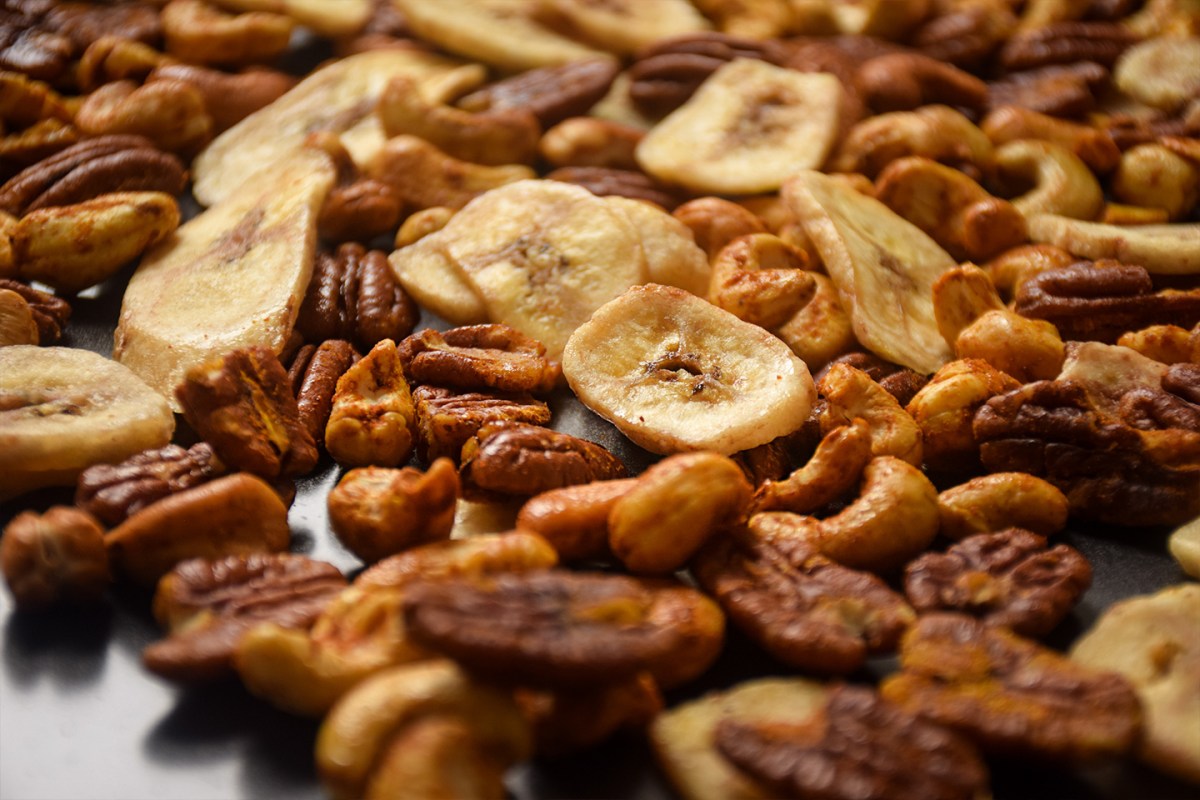Imagine a world where rich, flavorful gravies enhance every meal, free from the constraints of nuts. This journey delves into the art of crafting savory nut-free gravies, exploring fundamental techniques, diverse recipes tailored for various dishes, and creative variations to tantalize your taste buds. From the smooth, velvety texture of a classic gravy to the earthy depth of a mushroom variation, we’ll uncover the secrets to achieving gravy perfection, regardless of your culinary experience.
We’ll cover everything from building a perfect roux for a lump-free base to mastering the art of deglazing a pan to extract maximum flavor. Learn how different broths—vegetable, chicken, or beef—impact the final taste, and discover the transformative power of herbs and spices in creating unique flavor profiles. This comprehensive guide equips you with the knowledge and recipes to elevate your everyday meals and impress your guests with stunning, nut-free gravy creations.
Savory Nut-Free Gravy Recipes for Specific Meals
Nut-free gravies offer a delicious and inclusive alternative to traditional recipes, ensuring everyone can enjoy the rich, savory flavors of a perfect gravy. These recipes highlight the versatility of gravy, showcasing how simple adjustments can create distinct flavor profiles perfectly suited to different dishes.
Thanksgiving Dinner Gravy
This gravy, rich and deeply savory, complements the complex flavors of a Thanksgiving feast. The base utilizes pan drippings from the roast turkey, adding an unparalleled depth of flavor.
- Begin by collecting the pan drippings from your roasted turkey. Skim off excess fat, leaving about 2 tablespoons for richness.
- In a medium saucepan over medium heat, whisk together 2 tablespoons of all-purpose flour and 2 tablespoons of the reserved turkey fat. Cook for 1-2 minutes, stirring constantly, until the mixture is smooth and lightly browned – this creates a roux, the base of your gravy.
- Gradually whisk in 4 cups of low-sodium chicken broth, ensuring no lumps form. Continue whisking until the gravy simmers and thickens to your desired consistency.
- Season generously with salt and freshly ground black pepper. Add a teaspoon of dried thyme and a half teaspoon of dried sage for classic Thanksgiving flavors. For extra richness, stir in 1/4 cup of heavy cream or full-fat coconut milk (for a vegan option).
- Simmer for 5 minutes, stirring occasionally, to allow the flavors to meld. Taste and adjust seasonings as needed.
Roast Chicken Gravy
This lighter gravy perfectly complements the delicate flavor of roast chicken. Its simplicity allows the natural flavors of the chicken to shine through.
- After roasting your chicken, remove it from the pan and set aside to rest. Pour off excess fat from the roasting pan, leaving about 1 tablespoon.
- Place the roasting pan over medium heat and sprinkle 1 tablespoon of all-purpose flour over the pan drippings. Stir continuously until the flour is toasted and incorporated into the drippings.
- Gradually whisk in 2 cups of low-sodium chicken broth, ensuring a smooth consistency. Bring to a simmer, whisking constantly, until the gravy thickens.
- Season with salt and freshly ground black pepper. A pinch of dried rosemary and a squeeze of lemon juice add brightness and herbaceous notes that complement chicken beautifully.
- Simmer for 3-5 minutes, stirring occasionally, to allow the flavors to develop. Taste and adjust seasonings as needed.
Mashed Potato Gravy
This creamy gravy is designed to be the perfect partner for fluffy mashed potatoes. Its smooth texture and subtle flavor enhance the potatoes without overpowering them.
- In a small saucepan, melt 2 tablespoons of unsalted butter over medium heat.
- Whisk in 2 tablespoons of all-purpose flour and cook for 1-2 minutes, stirring constantly, until a smooth roux forms.
- Gradually whisk in 2 cups of warm milk or cream, ensuring no lumps form. Continue whisking until the gravy simmers and thickens.
- Season with salt and freshly ground white pepper (for a milder flavor than black pepper). A pinch of garlic powder and a dash of onion powder add subtle savory notes. For a touch of richness, stir in a tablespoon of sour cream or plain yogurt.
- Simmer for 5 minutes, stirring occasionally, until the gravy is smooth and creamy. Taste and adjust seasonings as needed.
Gravy Recipe Comparison
| Recipe | Base Liquid | Flavor Enhancers | Method Notes |
|---|---|---|---|
| Thanksgiving Dinner Gravy | Turkey Pan Drippings, Chicken Broth | Thyme, Sage, Heavy Cream/Coconut Milk | Roux-based, Simmered for Flavor Development |
| Roast Chicken Gravy | Chicken Pan Drippings, Chicken Broth | Rosemary, Lemon Juice | Simple Roux, Quick Simmer |
| Mashed Potato Gravy | Milk/Cream | Garlic Powder, Onion Powder, Sour Cream/Yogurt | Creamy Roux, Subtle Seasoning |
Advanced Techniques for Savory Nut-Free Gravies

Mastering the art of nut-free gravy goes beyond simply following a recipe; it involves understanding the nuances of flavor development, texture control, and troubleshooting common pitfalls. This section delves into advanced techniques to elevate your gravy-making skills and consistently produce rich, flavorful, and perfectly textured sauces.
Deglazing Techniques for Enhanced Flavor
Deglazing the pan after browning meat or vegetables is a crucial step in creating a deeply flavorful gravy. The browned bits clinging to the bottom of the pan, known as fond, contain a concentrated burst of flavor. To deglaze effectively, add a small amount of liquid—such as broth, wine, or even water—to the hot pan, scraping up the fond with a wooden spoon or spatula. The liquid will pick up the flavorful remnants, creating a richer base for your gravy. For example, when making a gravy for roasted chicken, deglazing the roasting pan with chicken broth will infuse the gravy with an intense chicken flavor. The process should be done gently to avoid scorching, ensuring a smooth, flavorful base. Imagine the rich, mahogany-colored fond dissolving into the shimmering broth, transforming into a foundation for a deeply savory gravy.
Impact of Cooking Methods on Gravy Texture and Flavor
Stovetop and slow cooker methods yield distinctly different gravy textures and flavor profiles. Stovetop gravies, cooked over direct heat, often develop a more intense flavor due to faster browning and reduction. The texture is generally smoother and more consistent, lending itself well to quick weeknight meals. A rich, dark roux, created by slowly cooking butter and flour together, forms the base for many stovetop gravies, offering a complex flavor and a velvety texture. Conversely, slow cooker gravies, simmered gently over a longer period, develop a milder, more nuanced flavor. The texture may be slightly thicker and potentially less consistent than stovetop gravies, but the low and slow cooking method allows the flavors to meld and deepen over time. Think of a slow-cooked mushroom gravy, where the earthy aromas and deep umami notes are amplified by the gentle cooking process.
Adjusting Gravy Consistency
Achieving the perfect gravy consistency is crucial for its successful integration with various dishes. Too thin, and it may lack body; too thick, and it can become pasty and unappetizing. To thin a gravy, gradually whisk in additional liquid—broth, water, or even milk—until the desired consistency is reached. Conversely, to thicken a gravy, you can incorporate a slurry (a mixture of cornstarch or arrowroot powder and cold water) or a roux (a mixture of butter and flour). Whisk the slurry or roux into the simmering gravy, stirring continuously until it thickens to the desired consistency. Visualize the gradual thickening process: initially a slightly watery sauce transforming into a smooth, luxurious coating for your meal. The key is to add the thickening agent gradually, stirring constantly to avoid lumps.
Common Gravy Mistakes and Their Rectifications
Several common mistakes can hinder the creation of a perfect nut-free gravy. Lumpy gravy, often resulting from insufficient stirring while incorporating thickening agents, can be rectified by pressing the gravy through a fine-mesh sieve or using an immersion blender to achieve a smooth texture. A gravy that is too salty can be partially salvaged by adding a small amount of sour cream or cream cheese to balance the saltiness. Conversely, a bland gravy can be revitalized with the addition of herbs, spices, or a splash of vinegar or lemon juice to add brightness and depth of flavor. Overcooked gravy, with a burnt or bitter taste, is unfortunately harder to rescue. However, preventing overcooking requires careful attention to heat and constant stirring. A well-made gravy should be a harmonious blend of flavors, with a smooth and appealing texture.
Mastering the art of nut-free gravy opens a world of culinary possibilities. From the comforting warmth of Thanksgiving gravy to the sophisticated elegance of a mushroom-infused masterpiece, the techniques and recipes explored here empower you to create delicious and inclusive meals for everyone. Embrace the versatility of these gravies, experiment with flavor combinations, and watch as your dishes transform into unforgettable culinary experiences. The journey of crafting the perfect gravy is a rewarding one—a testament to the power of simple ingredients and skillful techniques. So, gather your ingredients, and let the gravy-making begin!
FAQ Overview
Can I make nut-free gravy ahead of time?
Yes! Nut-free gravy can be made a day or two in advance. Store it in an airtight container in the refrigerator and reheat gently on the stovetop or in the microwave before serving.
What if my gravy is too thick or too thin?
If it’s too thick, whisk in a little warm broth or water until you reach the desired consistency. If it’s too thin, simmer it uncovered for a few minutes to reduce the liquid.
Are there any substitutes for cornstarch or arrowroot powder?
While cornstarch and arrowroot powder are excellent thickening agents, you can also experiment with tapioca starch or even a small amount of mashed potatoes for a slightly different texture.
Can I freeze nut-free gravy?
Yes, you can freeze nut-free gravy. Allow it to cool completely before freezing in an airtight container. Thaw it overnight in the refrigerator before reheating.


